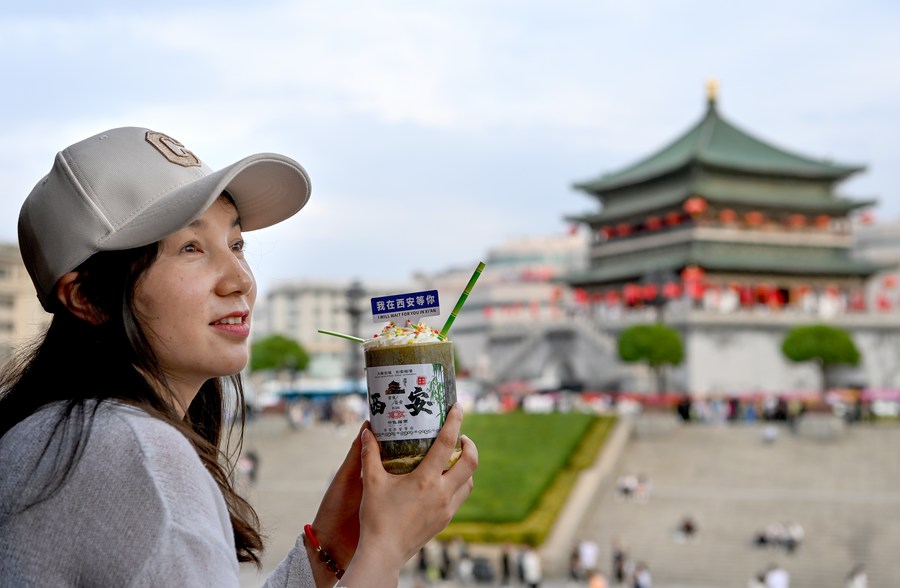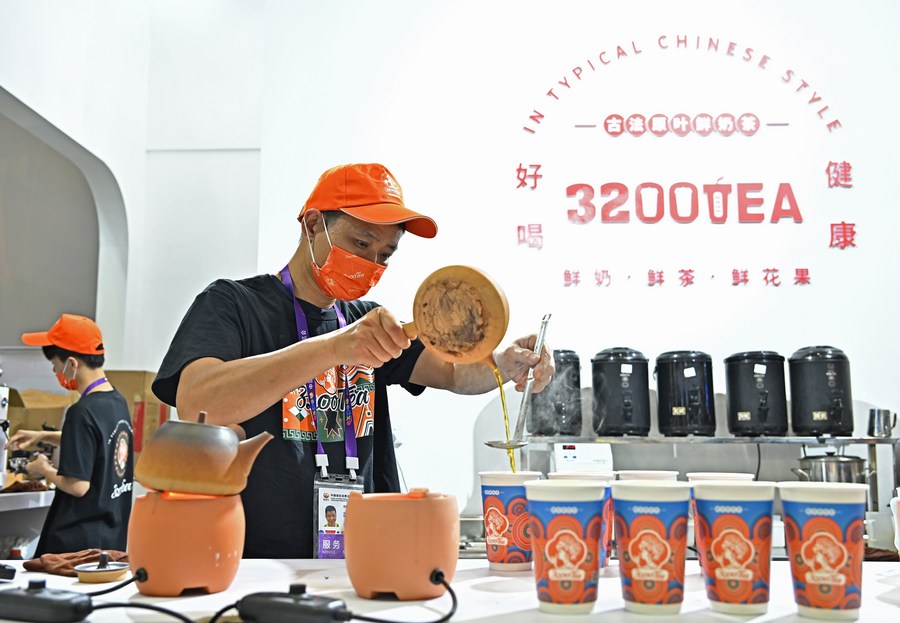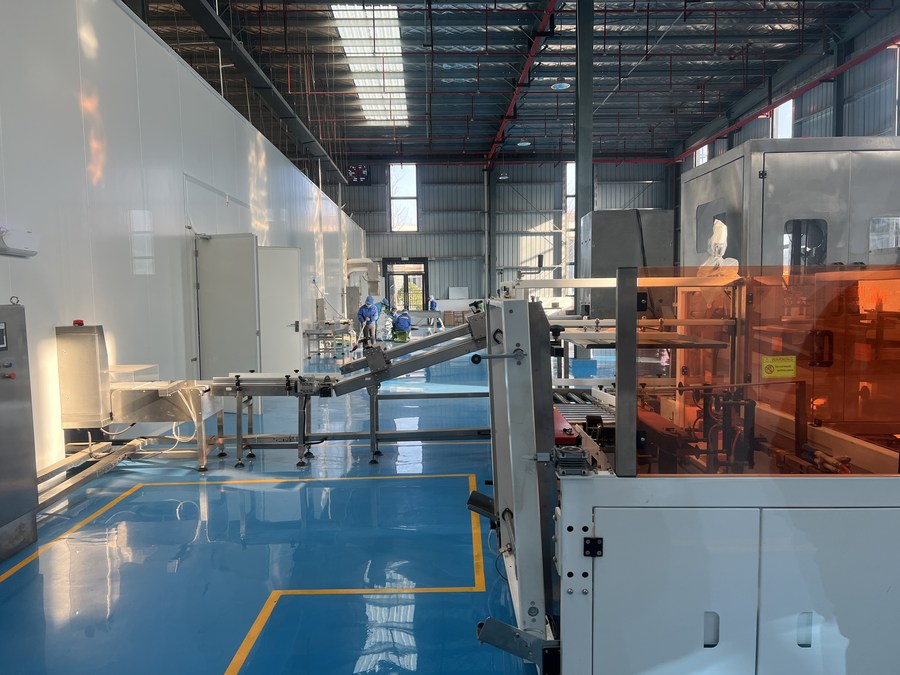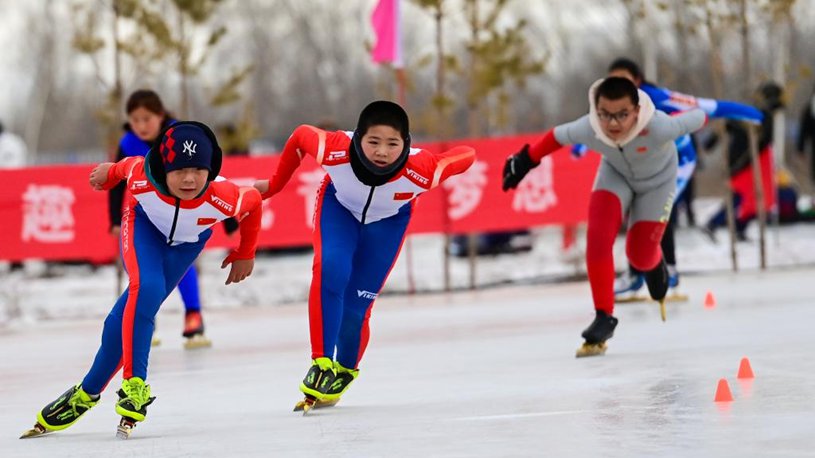
A tourist, with a new-style tea drink in her hands, enjoys the view near the Bell Tower in Xi'an, northwest China's Shaanxi Province, May 2, 2023. (Xinhua/Zou Jingyi)
* Chinese new-style tea brands such as HEYTEA have stepped up overseas expansion this year to seek new growth opportunities outside the heatedly competitive domestic market.
* Featuring a diverse combination of materials like fresh fruits, fresh tea leaves, milk and cheese, new-style tea drinks make tea taste better and drive the demands for tea leaves as raw materials, and their overseas ventures have boosted the tea trade.
* There is much market potential to be tapped among western consumers while the Southeast Asian countries remain a major overseas expansion destination for Chinese new-style tea brands.
BEIJING, Dec. 25 (Xinhua) -- Once a prized product and signature cultural symbol of ancient China in global trade, China's tea is seeking to refresh and recapture the world with a modern look and flavor.
TAPPING OVERSEAS PALATES
In early December, HEYTEA, a leading brand of Chinese new-style tea, opened its first U.S. store on Broadway, New York, selling over 2,500 cups of new-style tea on the first day of business.
"By providing high-quality products and services, we aspire to deliver a joyful brand experience to consumers in New York City and beyond, contributing to the ongoing development of the U.S. tea industry," said Gu Yujia, vice president of strategy at HEYTEA.

Exhibitors make milk tea for visitors at the third China International Consumer Products Expo (CICPE) in Haikou, capital of south China's Hainan Province, April 12, 2023. (Xinhua/Li Xin)
HEYTEA, which has over 3,000 domestic stores, launched its first overseas store in Singapore in 2018, and accelerated its globalization pace in 2023, opening outlets in the United Kingdom, Australia, and Canada, among others, this year.
The Shenzhen-based firm is not alone in venturing abroad. This year, counterpart Naixue opened an outlet in Thailand, while peer brand ChaPanda entered the Republic of Korea.
"It's a natural development for China's growing new-style tea industry to expand overseas, which is still a blue ocean compared with the domestic market and the overseas coffee market," noted Liu Chang, chief food and drink industry analyst with Huafu Securities.
RECIPE FOR INTEGRATED GROWTH
Featuring a diverse combination of materials like fresh fruits, fresh tea leaves, milk and cheese, new-style tea drinks have become a cup of tea for many young Chinese consumers, who would queue for modified tea drinks featuring rich flavors and colors.
The innovative combinations not only make tea taste better, but also drive the demands for tea leaves as raw materials, according to Wang Yuefei, deputy director with the China International Tea Culture Institute.
The overseas ventures of new-style tea brands have also boosted the tea trade, creating new sales opportunities for tea processing firms.
Houtang, a tea bio-tech firm in southwest China's tea hub of Guizhou Province, has inked partnership agreements with more than 100 new-style tea brands, whose products are supplied to over 50,000 new-style tea stores across China and in some Southeast Asian countries.

This photo taken on March 9, 2023 shows a workshop of Houtang, a tea bio-tech firm in southwest China's tea hub of Guizhou Province. (Xinhua/Liu Zhiqiang)
The company is also creating new tea combinations more suited to local tastes in overseas markets, as some new-style tea brands step up their global expansion efforts, according to Houtang's general manager Wei Chuwei.
The market value of China's new-style tea drinks is likely to surpass 200 billion yuan (about 28.17 billion U.S. dollars) in 2025, according to an industry report jointly released by the China Chain Store & Franchise Association and e-commerce platform Meituan.
WIDER REACH EXPECTED
Drinking tea is popular in over 160 countries and regions and is a daily routine for nearly half of the world's population, who would consume over three billion cups of tea on a daily basis, according to Wang.
So far, the Southeast Asian countries, which have a large number of young consumers and relatively low costs for transporting raw materials, remain a major overseas expansion destination for Chinese new-style tea brands.
Lai Yang, an expert with the China General Chamber of Commerce, is upbeat about the overseas market prospects of new-style tea, which has potential for gaining wider popularity among western consumers given the rising influence of Chinese culture globally.

A farmer picks tea leaves at a tea plantation in Meitan County, southwest China's Guizhou Province, April 4, 2023. (Xinhua/Ou Dongqu)
HEYTEA said its London store has registered maximum sales of some 2,000 cups a day since opening, while its average daily sales exceeds 1,300 cups. The brand's Melbourne store saw nearly 3,000 cups sold in just a day.
"Challenges and opportunities coexist when doing business overseas," Lai noted. "To survive and thrive in overseas markets, new-style tea brands have to optimize products and services based on a deep understanding of the local market." ■












